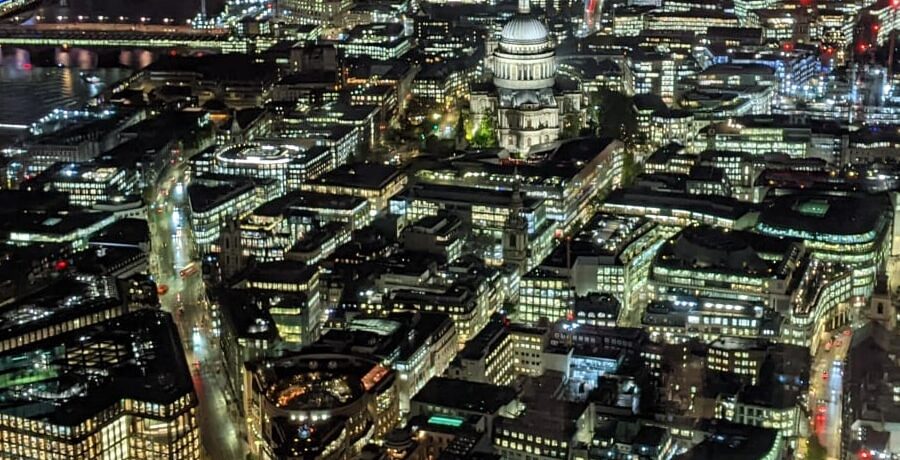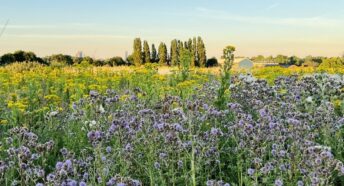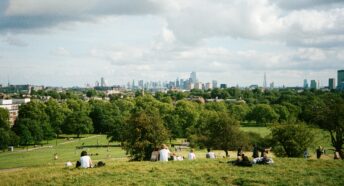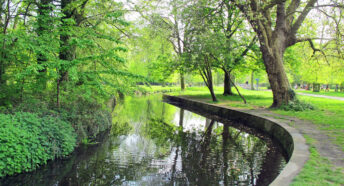Light pollution in London – urgent action needed
Light pollution in London is having a huge negative impact on wildlife and we’re wasting enormous amounts of energy on unnecessary lighting. It’s time to stop night blight.
New buildings and cheaper, more dynamic LEDs are making light pollution worse. Policies and legislation to tackle this are very limited and there is no systematic plan to reduce light pollution in London. The stars are lost; wildlife is suffering; energy is being wasted; health and wellbeing is affected; and there is no incentive to improve lighting installation or design. What needs to change?
Light pollution is simply not adequately addressed via legislation or policy
- Current legislation is entirely inadequate for addressing light pollution as it is managed as a ‘statutory nuisance’, designed to deal with public complaints rather than to proactively reduce light pollution or support wildlife.
- The planning system lacks strength and consistency in relation to light pollution. The National Planning Policy Framework states development should “limit the impact of light pollution from artificial light on local amenity, intrinsically dark landscapes and nature conservation” but often development proposals are not assessed against such policies.
- The reduction of obtrusive light is a technical consideration within lighting professional guidance and standards. Their adoption within designs is not legally required nor is it applied consistently and leads to unnecessary and avoidable light pollution.
The Mayor should establish a London-based dark sky designation framework and targets to reduce light pollution. This could take the principles within existing designations but tailor them to London. A project should be established to improve policy, participation and consistency based on the successes of the UK Dark Sky Places family. London could adopt similar policies and plans used by DarkSky International places within the UK and by local authorities using light pollution guidance and policy. The London Plan should also restrict the creation of installations deliberately designed to create impact with light.
London boroughs should introduce the following measures
- All authority owned street lighting should be <3000K with limits on spectral emissions under 500nm
- Fixtures should achieve zero upward light
- Reduced illuminance curfews guided by British Standards should be used
- Lighting impact assessments should be required for all major development, stating how impact on lighting in terms of spill, glare, sky glow and visual obtrusion will be kept to a minimum and with lighting having clear justification.
- All London boroughs should adopt planning policies similar to those used in IDA places and protected landscapes (based on professional guidance which applies in any setting).
- Boroughs should consult to ensure the needs of communities are taken into account (note that unsympathetic lighting installations can reduce the connection with public spaces).
- Boroughs should collaborate with neighbouring boroughs to ensure that lighting designs do not negatively impact over wider areas.
- Artistic lighting installations which aim to illuminate the night sky for effect e.g. light towers, light domes, sky-scanners should be avoided.
- Dynamic Public Realm spaces should avoid prominent and bright installations that contribute to light pollution. Designers and artists should be required to meet an artistic brief that prioritise the environmental impact.
- Light pollution reduction targets should be established and link to biodiversity, energy-use and carbon emissions targets.
- Lighting development should follow industry standards and guidance for lighting and the reduction of obtrusive light.
- Compliance with sustainability metrics within projects should include light pollution.
- Boroughs should create advice for domestic and non-planning users to ensure best practice and the avoidance of nuisance.
The Dark Skies Toolkit for Local Authorities LOCAL AUTHOURITIES AND DARK SKIES: A guide to help Local Authorities and communities to work together on improving dark skies and reducing light pollution (southdowns.gov.uk) provides a template for all local authorities.
The Mayor and boroughs should work with park friends groups and managers to designate London’s first 5 dark Urban Night Sky Places in 2023-24 and identify 10 further places for the Dark Sky Discovery Scheme
It is possible to designate some places as IDA Urban Sky Parks. The designation does not give legal protection but requires stakeholders to establish appropriate policies, lighting and engagement opportunities that single out that site as important for access to darker skies (tried and tested policies are available). Once designated a local authority should require any development to have regard and compliance for protecting dark skies and reducing light pollution. This does not mean banning lighting but using “the right light, in the right place and the right time” (Institution of Lighting Professionals).
An Urban Night Sky Place (UNSP) is a municipal park, open space, observing site, or other similar property near or surrounded by large urban environs whose planning and design actively promote an authentic night-time experience in the midst of significant artificial light. Candidate sites in London will need to allow some access to a reasonable starry sky (planets, moon, constellations, but probably no Milky Way unless the parks are large and free of pollution). So far there are only 6 IDA urban sites globally.
Parks and dark urban areas can also be part of the Dark Sky Discovery Scheme designed to promote places where people can access a relatively dark sky. The process is simpler and does not specifically require lighting compliance and policy (some local mapping with a Sky Quality meter may be required) and can help to raise awareness and ensure people can enjoy dark skies.
Businesses, boroughs and Londoners – switch off the lights!
Being sustainable means protecting the night sky and saving energy which is good for humans, biodiversity and the planet. Turning lights off is an easy win in this respect. All you need to do is turn a switch. Light coming from commercial buildings and public realm lighting is causing more damage now than street lights, so these need to be switched off.









